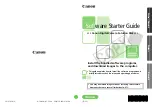
Section 11. Utilities Installed with LoggerNet Admin and LoggerNet Remote
where “directory” is a keyword indicating that the next parameter “
pathname
”
is a valid directory path on the computer file system. Each instance of Data
Export started in this manner will save it’s setting in a separate *.ini file. This
initialization file is saved to the directory specified by the “
pathname
”
command line argument.
For example a shortcut with the following as the command line in the “Target”
window would start Data Export using the initialization file stored in the
directory “c:\Campbellsci\LoggerNet\SD1”.
c:\Program Files\Campbellsci\LoggerNet\SocketDataExport.exe directory
c:\Campbellsci\LoggerNet\SD1
11.4.2 Theory of Operation
The Data Export client is used in conjunction with TCP/IP Berkeley sockets
network transfer protocol to transfer datalogger records from one computer (or
process) to another. In this role the Data Export is acting as both a client and a
server. The Data Export Client attaches to the LoggerNet communication
server and gets the selected data from the data cache. It then makes this data
available for retrieval on a TCP/IP socket. The computer program that
retrieves the data (the custom data retrieval client application) must connect to
the provided socket. The Data Export application acts as a server for the
custom data retrieval client.
The most typical use for the Data Export functionality is a situation where the
customer has a database or file system that is already integrated with data
management procedures. The custom data retrieval client gets the data from
the socket provided by the Data Export and writes it to the customer’s database
or file.
LoggerNet
Communications
Server
Socket Data
Export Client
Custom Data
Retrieval Client
Customer Files/
Database
The LoggerNet server has the responsibility to see that every collectable record
is collected from the network of dataloggers. The collected data is stored in the
data cache of the server. When the Data Export client is first initialized it sets
up the socket and then waits for a data retrieval client to connect. Once the data
retrieval client connects, the Data Export client gets the records for the selected
tables from the server data cache, and sends them one at a time to the custom
data retrieval client.
To ensure that all of these records are transferred to the client, Data Export uses
an acknowledgment scheme. The basic idea behind the protocol is that as each
record is sent to the client, the client will report the Station Name, Table Name,
and Record Number back to the server after it has secured that record. The
server uses the acknowledgment to mark the progress of the transfer. When the
session is broken, or if the Data Export doesn’t receive the acknowledgment,
11-14
Summary of Contents for LoggerNet
Page 2: ......
Page 30: ...Preface What s New in LoggerNet 4 xxvi...
Page 32: ...Section 1 System Requirements 1 2...
Page 44: ...Section 2 Installation Operation and Backup Procedures 2 12...
Page 136: ...Section 4 Setting up Datalogger Networks 4 80...
Page 227: ...Section 7 Creating and Editing Datalogger Programs 7 9...
Page 298: ...Section 7 Creating and Editing Datalogger Programs 7 80...
Page 402: ...Section 9 Automating Tasks with Task Master 9 12...
Page 406: ...Section 9 Automating Tasks with Task Master 9 16...
Page 450: ...Section 11 Utilities Installed with LoggerNet Admin and LoggerNet Remote 11 22...
Page 454: ...Section 12 Optional Client Applications Available for LoggerNet 12 4...
Page 462: ...Section 13 Implementing Advanced Communications Links 13 8...
Page 482: ...Section 14 Troubleshooting Guide 14 20...
Page 570: ...Appendix F Calibration and Zeroing F 16...
Page 578: ...Appendix G Importing Files into Excel G 8...
Page 579: ......
















































